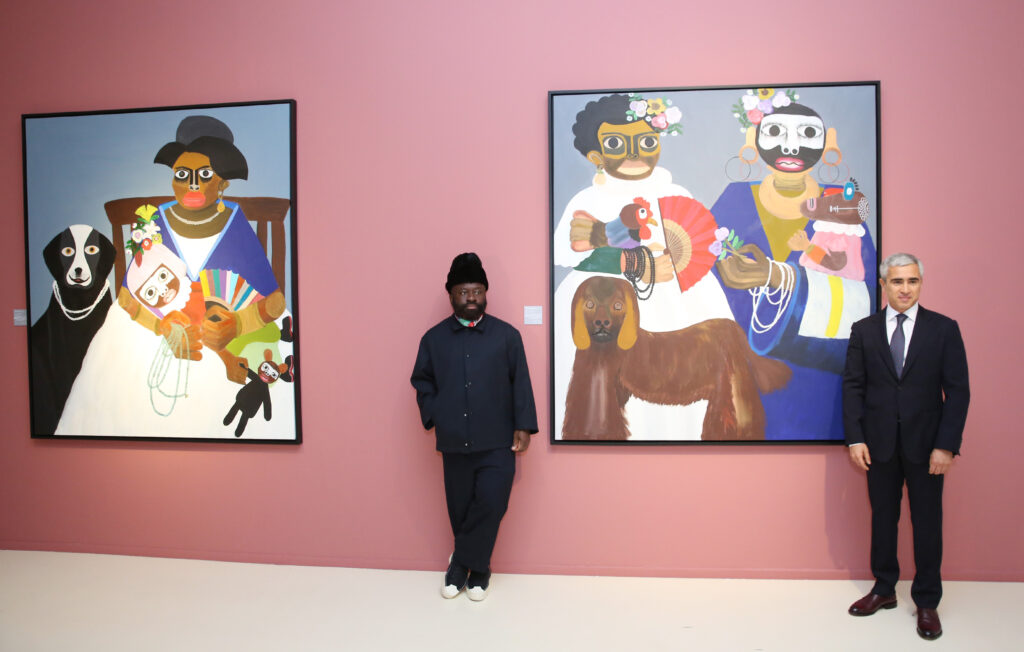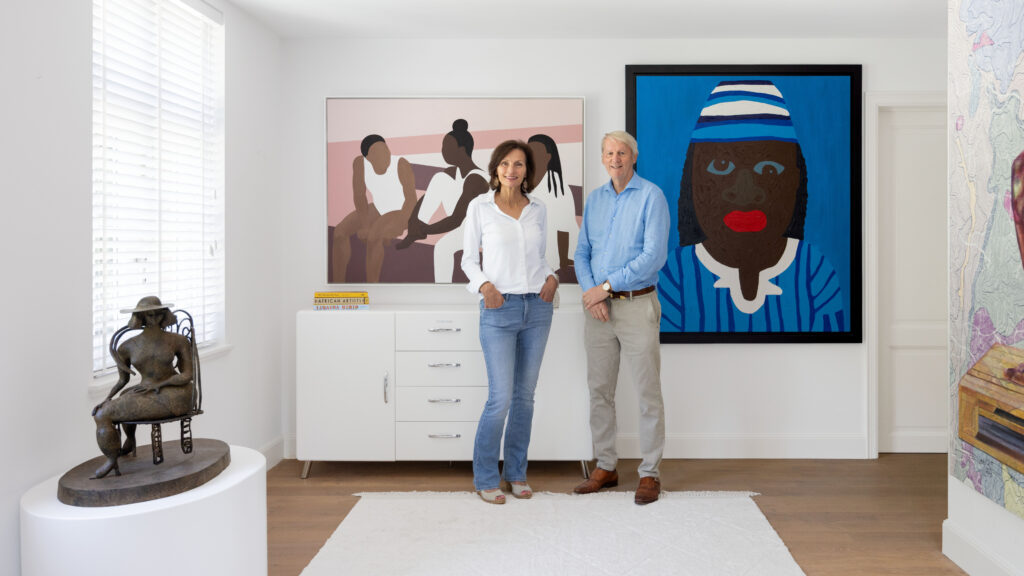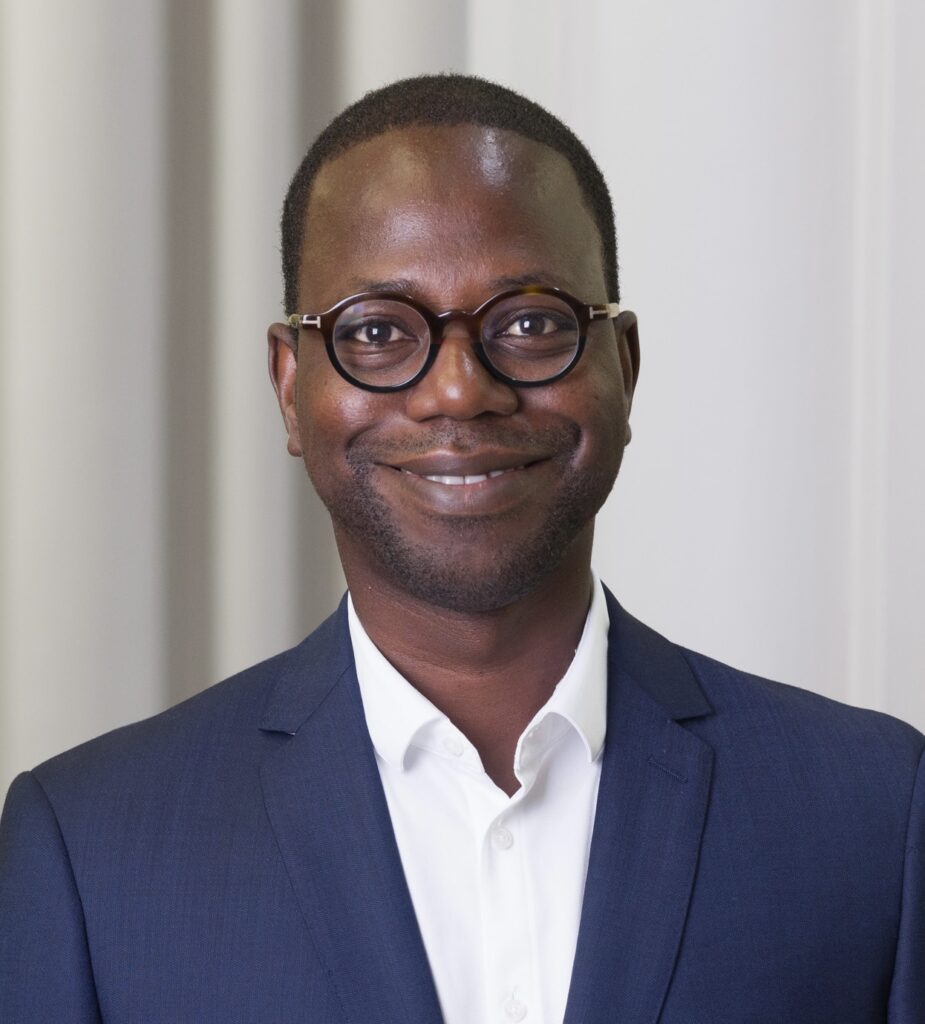An exhibition titled “Crucible of Hope” by the renowned Ghanaian artist Kojo Marfo and curated by Jean-David Malat has recently opened its doors at the prestigious Heydar Aliyev Center on the 13th of February. The opening ceremony witnessed esteemed guests including Vice-President of the Heydar Aliyev Foundation, Leyla Aliyeva, and Head of Baku Media Center, Arzu Aliyeva, who graced the event with their presence.

This exhibition, comprising over 20 stunning art pieces, promises a visual journey through Marfo’s childhood dreams intricately interwoven with the complexities of the contemporary world. Marfo’s artistic voyage finds its roots in his upbringing in Ghana, where he was deeply influenced by traditional Akan art and carvings. These early encounters sparked his passion for art and visual culture, laying the groundwork for his distinctive artistic style.
In a candid conversation with Africans Column, Kojo Marfo offers deeper insights into the inspiration behind his exhibition and his artistic process. He shares the personal stories and motivations that drive his creative endeavors, offering a glimpse into the intricate tapestry of his artistic vision. From navigating the intersection of personal nostalgia and societal themes to addressing pressing social issues through art, Marfo’s perspective provides valuable insights for aspiring artists and art enthusiasts alike.
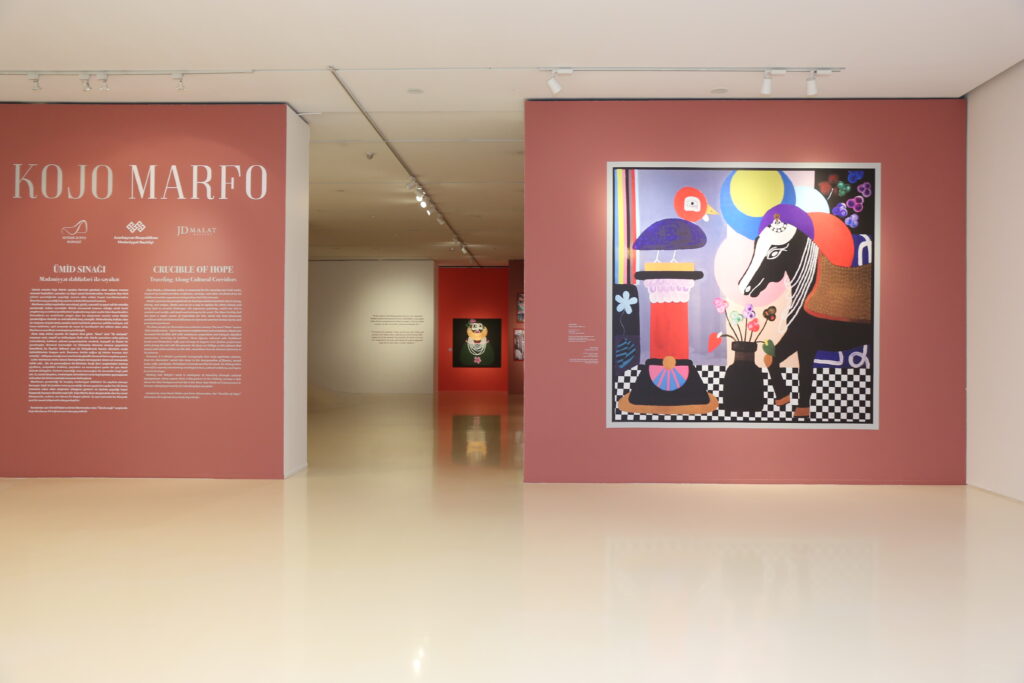
Interview:
Africans Column: Kojo, can you share with us the inspiration behind your exhibition “Crucible of Hope”? What motivated you to create this collection of artworks?
Kojo Marfo: The “Crucible of Hope” exhibition aims to showcase the joys, hopes, and struggles we encounter on our life’s journey. These trials and aspirations are inherent to our existence, and the exhibition explores my personal experiences, as well as those of individuals I have encountered. By sharing these stories and shedding light on our burdens and strength of our mothers as some have to do it all by themselves. my goal is to inspire a deeper understanding of the challenges we face as we strive for success and meaning in our lives, while also seeking to bring immense joy and fulfillment to our loved ones.

Africans Column: Your work often reflects a blend of cultures encountered during your travels. How has your Ghanaian heritage influenced your artistic style and themes explored in your art?
Kojo Marfo: My Ghanaian heritage is a crucial aspect of both my everyday life and artistic style. It serves as a valuable lens through which I view and comprehend various facets of life. Without this cultural background, I believe I would be lacking in perspective and unable to achieve the artistic expression I desire. In terms of my artwork, my heritage is a constant source of ideas and inspiration. Wooden dolls, traditional attire, and cultural traditions have always captured my attention and influenced my creative process. For example, the round, two-dimensional figures that I purposefully incorporate into my work are inspired by the fertility dolls from my childhood. These figures not only reflect my heritage, but also offer insights into childcare practices that are universal across different cultures.

Africans Column: Could you walk us through your artistic process? How do you translate your ideas and concepts into visual form?
Kojo Marfo: My creative process is deeply intuitive, unburdened by preconceived notions or deliberate thoughts. Through my artwork, I aim to cast a spotlight on the intricacies of human existence—those often overlooked or brushed aside. Each canvas becomes a vessel for a unique human narrative. While the act of creating these pieces can be arduous, it pales in comparison to the challenge of addressing complex societal issues. Iimmerse myself in museums and galleries, seeking inspiration and ideas. When I approach a blank canvas, I begin with seemingly random sketches, allowing the process to guide me. Gradually, these abstract elements coalesce into a direction—a visual language that mirrors the stories I wish to convey. Occasionally, I draw from the well of traditional African artifacts, infusing my work with echoes of heritage. But before any stroke of paint touches the canvas, I ensure clarity—a message that resonates. And in those quiet moments alone in my studio, devoid of the urge to paint, I reflect deeply on the social fabric that binds us all.
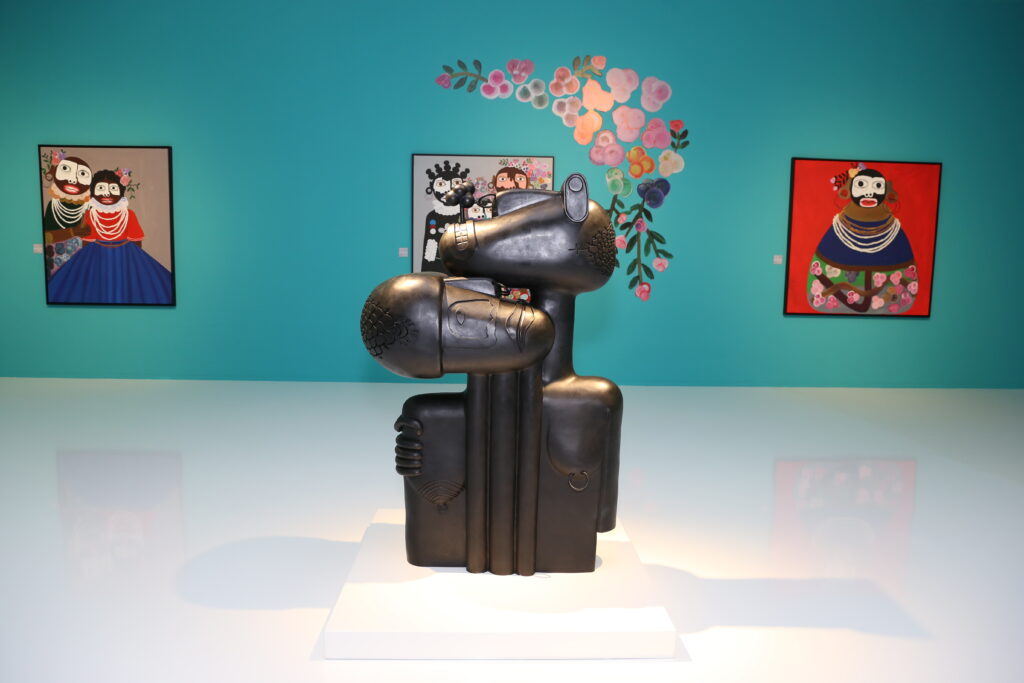
Africans Column: “Crucible of Hope” seems to evoke a sense of optimism and resilience. What message or emotion do you hope viewers take away from experiencing your artwork?
Kojo Marfo: I want people will see reflection themselves in the stories behind the artworks and, most importantly, I hope the viewers will understand the shared human values that we all have in common and the cultural understanding that is often hindered by geographical barriers. We as humans tend to be ignorant or rely on some corrupt individuals’ navigation of other cultures to bring things to our attention.
Africans Column: Your exhibition promises a visual journey through your childhood dreams intertwined with contemporary realities. How do you navigate the intersection of personal nostalgia and broader societal themes in your artwork?
Kojo Marfo: No matter where we live in the world, we go through similar experiences in childhood and have similar dreams. Some are lucky to navigate through the challenging path, others fall through or don’t survive. The things I am raising in my time are still the same as what is happening now. As a person, I always compare, whether it is the people or the architecture. Without comparing, it is hard to understand. I always find myself immersed in different thoughts, so that I can reinvent myself to fit into the era I am in.

Africans Column: Kojo, are there any specific challenges or rewards you encountered while creating the pieces featured in “Crucible of Hope”? Any memorable moments or breakthroughs during the creative process?
Kojo Marfo: The images I create are not difficult for me, whether they are paintings or sculptures. The hardest part of my practice is the stories behind them, as I want them to be authentic. I don’t value perfection, so I don’t have a breakthrough in terms of aesthetics. The main breakthrough for me was when I was thinking about human conditions, and I was struggling to find a meaningful story. Luckily, something pushed me to look deep into my own upbringing and use it to bring attention to the burdens we all share. So yeah, I guess that was the breakthrough for me.
Africans Column: As an artist, how do you see your role in addressing social issues such as inequalities, religion, politics, and spiritualism through your art?
Kojo Marfo: As an artist, I believe my role is to use my artwork as a platform for expression, communication, and reflection. I aim to tackle important social issues that resonate with me and society as a whole, including themes like inequality, religion, politics, and spirituality. Through my art, I strive to challenge the status quo, raise awareness, inspire change, and foster meaningful conversations. I am driven to explore the diverse human experiences, values, and beliefs, and use my creativity to connect with others and share my unique perspective. Ultimately, my goal is to make a positive impact and contribute to important causes by using imaginative and thought-provoking visuals. In a world filled with unnecessary conflicts, I have found that creating surreal and fantastical images has been an effective way to draw attention to significant issues, such as cultural practices and identity. Through my art, I hope to shed light on these important topics and spark conversations that can lead to positive change.

Africans Column: What advice would you give to aspiring artists, particularly those looking to explore their cultural heritage and personal experiences in their work?
Kojo Marfo: Be authentic and honest. Express yourself in your own unique voice and style. Don’t try to imitate or please others. Share your stories, feelings, and opinions with courage and confidence. Don’t shy away from difficult or controversial topics. Try to be curious and open-minded. Learn about your own culture and history, as well as other cultures and perspectives. Seek inspiration from diverse sources and experiences. Don’t be afraid to experiment and try new things.
Conclusion:
Through his introspective journey, Kojo Marfo invites viewers to explore the intersection of personal identity, cultural heritage, and societal narratives. With each stroke of his brush, Marfo paints a vivid portrait of human resilience, hope, and the universal quest for understanding. “Crucible of Hope” stands as a testament to the power of art to transcend boundaries and illuminate the shared experiences that unite us all.
